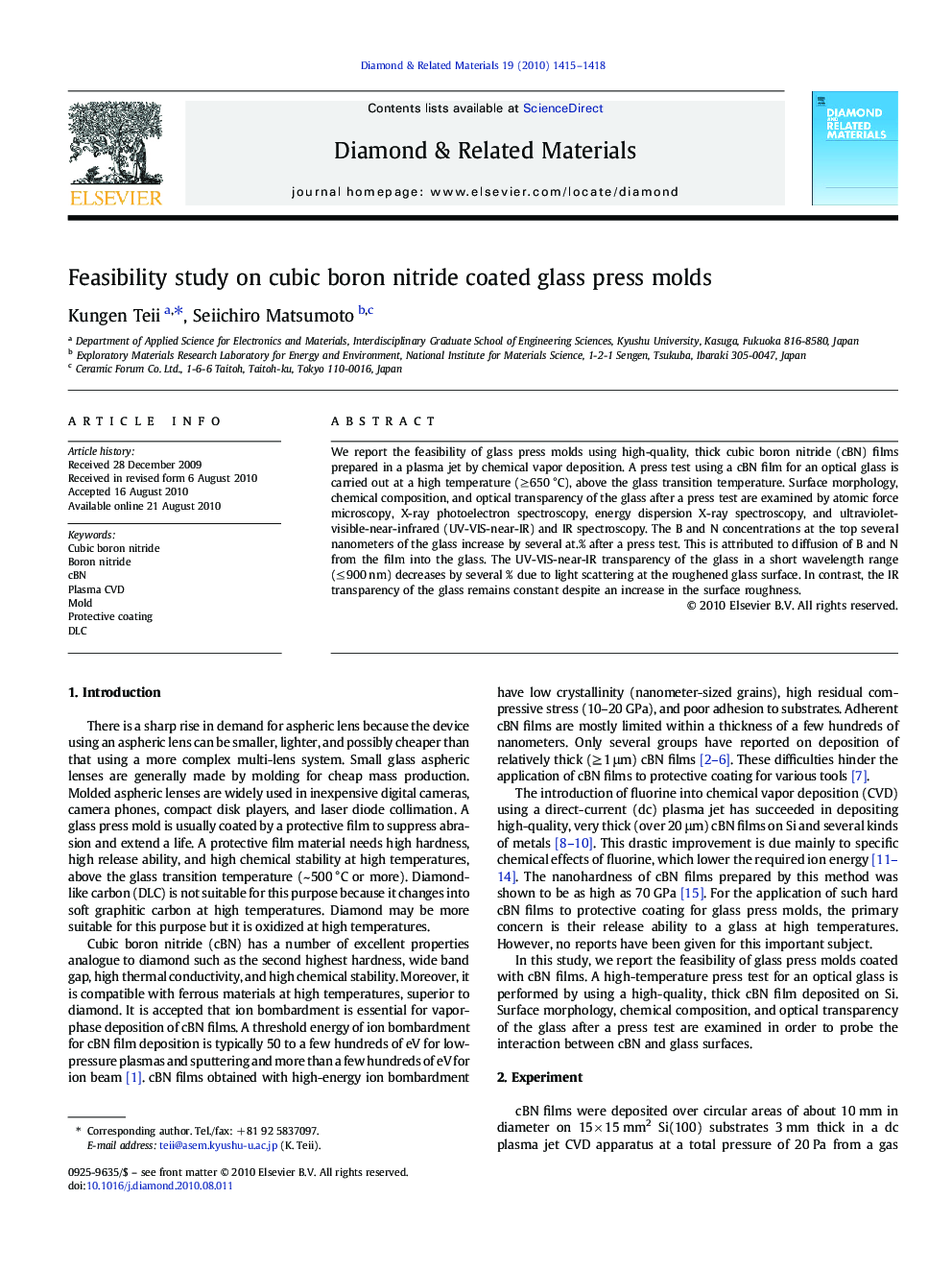| Article ID | Journal | Published Year | Pages | File Type |
|---|---|---|---|---|
| 700861 | Diamond and Related Materials | 2010 | 4 Pages |
We report the feasibility of glass press molds using high-quality, thick cubic boron nitride (cBN) films prepared in a plasma jet by chemical vapor deposition. A press test using a cBN film for an optical glass is carried out at a high temperature (≥ 650 °C), above the glass transition temperature. Surface morphology, chemical composition, and optical transparency of the glass after a press test are examined by atomic force microscopy, X-ray photoelectron spectroscopy, energy dispersion X-ray spectroscopy, and ultraviolet-visible-near-infrared (UV-VIS-near-IR) and IR spectroscopy. The B and N concentrations at the top several nanometers of the glass increase by several at.% after a press test. This is attributed to diffusion of B and N from the film into the glass. The UV-VIS-near-IR transparency of the glass in a short wavelength range (≤ 900 nm) decreases by several % due to light scattering at the roughened glass surface. In contrast, the IR transparency of the glass remains constant despite an increase in the surface roughness.
Graphical AbstractFigure optionsDownload full-size imageDownload as PowerPoint slideResearch Highlights► A press test for an optical glass is performed at a high temperature by using a high-quality, thick cubic boron nitride (cBN) film. ► The UV-VIS-near-IR transparency of the glass decreases slightly when the surface roughness of the glass increases. ► The IR transparency of the glass remains constant despite an increase in the surface roughness.
